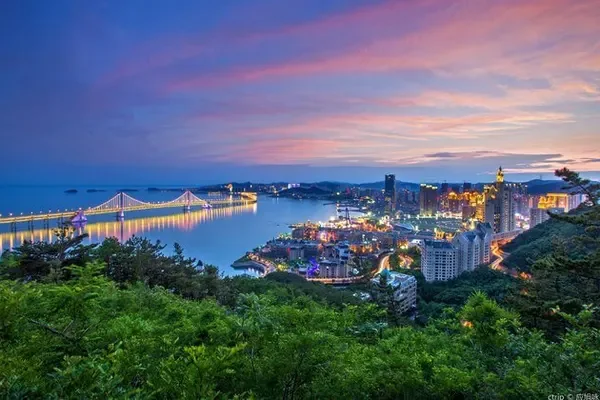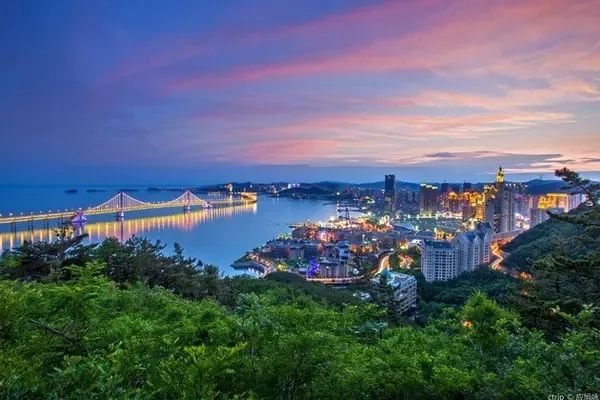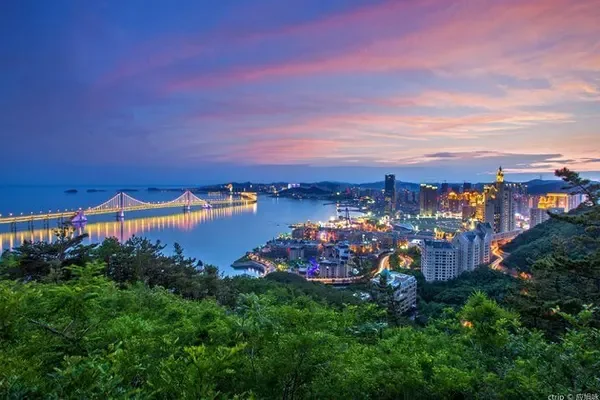1. South Gate Building and South Gate Square

First of all, I recommend the South Gate and South Gate Square in Yinchuan City. Not to mention the specific location. In Yinchuan, everyone knows, who doesn't know the South Gate Tower? This is the primary venue for important festivals and celebrations of the people of Yinchuan and even Ningxia. It looks like a miniature version of Tiananmen Square! According to legend, it was built by Ming Chengzu Zhu Di almost at the same time as Tiananmen Square in Beijing. Because there were rumors that Zhu Di intended to rebel, Zhu Di built this gate smaller than Tiananmen Square. The South Gate Tower is the only one of the six ancient gate towers in Yinchuan that has survived to this day.

Probably to welcome the arrival of the National Day, the South Gate Building and South Gate Square are being maintained, and the construction fence looks a little obstructive. This attraction is free to visit. I believe her tomorrow will be better.
2. Nanguan Grand Mosque (this group of photos was taken on a rainy day with a mobile phone)

The Nanguan Grand Mosque is located in the southwest corner of Nanmen Square. Because of its unique shape, it can be seen from the square. Tickets are 12 yuan. This is the central place for religious activities of Hui people in Yinchuan City. On Juma Day or the traditional Hui festival every year, hundreds of Muslims gather here to make a pilgrimage.



It is said that the original temple was first built in the late Ming Dynasty and rebuilt in 1981. The design was presided over by Yao Fuxing, a Hui architect who graduated from the Department of Architectural Design of Tsinghua University. The main hall of the reconstructed Nanguan Grand Mosque is 26 meters high, facing east from west, and covers an area of about 10,000 square meters. The main hall has two floors with a circular vault, the upper floor is the main hall and balcony, and the square worship hall can accommodate more than 1,300 people to worship. The lower floor has a spacious bathing room, chapel hall, female chapel hall, Arabic school, imam bedroom, office, reception room, etc., all connected by corridors.



3. Yuhuang Pavilion (this group of pictures was taken by mobile phone in rainy days)
Yuhuang Pavilion is located at the intersection of Jiefang East Street and Yuhuang Pavilion South and North Streets in Xingqing District, Yinchuan. It is less than one kilometer from the South Gate. Admission is free.

There is no way to check when this pavilion was first built. From the map of Fucheng in "Hongzhi Ningxia Xinzhi" in Ming Dynasty, the current location of Yuhuang Pavilion is where the Drum Tower of Fucheng in Ming Dynasty is located. It was destroyed by an earthquake in the third year of Qianlong in the Qing Dynasty (1739). After being rebuilt, it was called "Jade Emperor Pavilion". Qing Qianlong's "Yinchuan Xiaozhi" stated: "Extremely respectful and open, and dedicated to Emperor Zhenwu." After that, it was called Yuhuang Pavilion.


Yuhuang Pavilion is 22 meters high and covers an area of about 1040 square meters. Under a pedestal with a length of 36 meters, a width of 28 meters and a height of 8 meters, there is a north-south arched opening in the middle. There are stone steps on the outside of the northwest side to climb the building for sightseeing. Yuhuang Pavilion is also the only remaining ancient wooden high-rise pavilion in Yinchuan City. Its unique architectural style and superb architectural skills fully reflect the exquisite skills of Yinchuan's ancient skilled craftsmen. Now Yuhuang Pavilion is a cultural relic protection unit in Ningxia. Various small art, calligraphy and cultural relic exhibitions are often held on the pavilion. It is one of the open tourist attractions in Yinchuan.




4. Chengtian Temple Pagoda
In the southwestern part of the ancient city of Yinchuan, there is a famous temple called Chengtian Temple. In the middle of the temple, there is an ancient pagoda standing in the clouds, which is the Chengtian Temple Pagoda. Yinchuan people call it "South Pagoda". This is the tallest brick pagoda among the more than 100 existing ancient pagodas in Ningxia. It is about 1.2 kilometers from the South Gate. Tickets are 10 yuan.

The gate of Chengtian Temple opens to the east, and the existing buildings in the courtyard include the Hall of Five Buddhas, the Pagoda, the Hall of Wei Tuo, and the Hall of the Reclining Buddha. There are north-south supporting halls on both sides of the two halls of Weituo and Reclining Buddha. Between the halls, brick-carved vertical flower doors with double eaves are connected with the surrounding walls to form a courtyard-style courtyard. The Hall of Five Buddhas located in the outer courtyard is built on the same east-west axis as the pagoda. The outer courtyard is spacious, with towering old trees, evergreen pines and cypresses, solemn and quiet.


Chengtian Temple Pagoda is an octagonal brick pagoda with 11 stories, 64.5 meters high, 0.5 meters higher than the Big Wild Goose Pagoda in Xi'an. The tower body is built on a square platform with a height of 2.6 meters and a side length of 26 meters. Chengtian Temple Pagoda is also the only ancient pagoda in Ningxia that has documented the date of its construction. According to the "Hongzhi Ningxia Xinzhi" in the Ming Dynasty: "The tower of Chengtian Temple is in Chengtian Temple. It was built by the Puppet Xia (Xixia). The architectural exhibition room has collected many precious cultural relics in Ningxia's history, nationality, military affairs, etc., and has become an important activity place for people to watch and play.


5. Haibao Pagoda
Haibao Pagoda is located in Haibao Pagoda Temple in the northwest of Xingqing District, Yinchuan City. It is the oldest Buddhist building in Ningxia and one of the first batch of key cultural relics protection units in my country. The tower is a square brick tower with nine floors and eleven floors, with a height of 53.9 meters. It has been repaired many times in history and is an important tourist attraction in Ningxia.

The Chengtian Temple Pagoda is called the South Pagoda by Yinchuan people, and the Haibao Pagoda is called the North Pagoda by Yinchuan people. It can be seen that the status of these two echoing pagodas in the hearts of Yinchuan people. Interestingly, Chengtian Temple Pagoda got its name because it was in Chengtian Temple, and Haibao Pagoda Temple got its name because of Haibao Pagoda. Haibao Pagoda Temple, called "Haibao Temple" in the late Qing Dynasty and early Republic of China, is located 1.5 kilometers northwest of the old city of Yinchuan, a little far from the south gate.

It is unknown when the Haibao Pagoda was first built. According to the "Hongzhi Ningxia New Records" of the Ming Dynasty: "The Black Pagoda is three miles north of the city. I don't know why it was built." The current 11-story Haibao Pagoda was rebuilt during the Qianlong period. During the reconstruction, two floors were missing, and wooden ladders were used instead to circle from the tower room to the top. Its "Asian" character structure is unique, which is of great ornamental value and research value.

Unlike Chengtian Temple Pagoda, which is surrounded by dense roads, Haibao Pagoda is located in Haibao Park. It has a large area and a wide view, making it very suitable for sightseeing. Haibao Park is free to play, but you need 10 yuan to buy tickets to visit Haibao Pagoda Temple and Haibao Pagoda.



6. People's Square
Finally, I recommend People's Square for you. People's Square is located on the famous Beijing Middle Road in Yinchuan. It is named after it is in front of the Yinchuan Municipal People's Government. It is surrounded by venues and buildings such as Ningxia Museum, Ningxia Library, Ningxia Science and Technology Museum, and Yinchuan International Convention and Exhibition Center. The square and surrounding venues All are free to visit.

It is very good to watch the sunrise and night view in People's Square.














